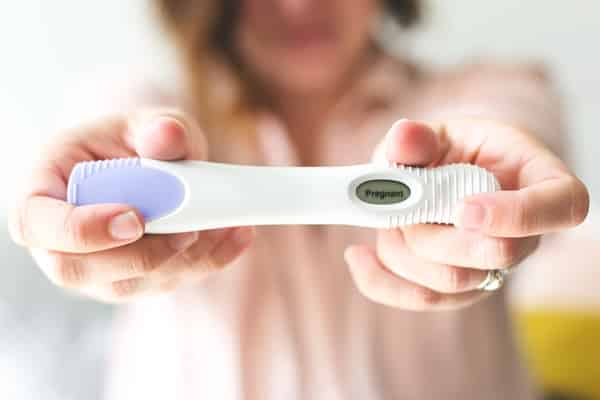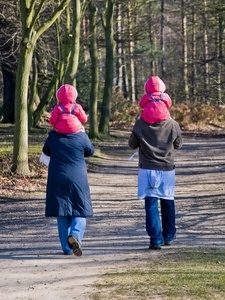When it comes to inquiring as to just how rare are twins, it is helpful to get some perspective from the twinning trend over the 20th century. A study by Princeton reveals that the rate of having twins in various countries began to rise significantly in the second half of the 1980’s. So, the general notion we’ve had of twins being rare is slowly changing.
So, How Rare are Twins?
Are twins more common today?
The answer to this is yes. It is slowly becoming something more common if we observe the increasing trend of twin births. Between 1980 and 2009, the twin birth rate rose by 76%. As of 2013, it has been noted that three in one hundred births in the US are twins and the likelihood of having identical twins is about three to five in 1000 births.
The number of twins being born has increased over the past three decades. The reason for this leads us back to the study by Princeton which explains that two-thirds of this upward trend is attributed to the increased frequency of fertility treatments, while the remaining third is because a lot of women have chosen to have children later in life.
It is a fact that older mothers have higher chances of conceiving twins. In 2009, seven percent of babies born to women who were 40 or older had a twin delivery, while five percent of twin births were attributed to women aged 35 to 39. Women who were under 25, on the other hand, accounted for two percent of twin births.
Is it rare to conceive twins naturally?

The chances of having twins are higher among women who are either 35 years old or older. This is because women this age produce more ovulation-stimulating hormones, triggering the release of more than one egg in a cycle.
A report released on January 2018 by the Centers for Disease Control and Prevention’s National Center for Health Statistics reveals that the rate of twinning (which includes naturally-conceived twins and those with assisted fertility medication) is 1 in 30 pregnancies.
But then if we zero in on naturally conceived twins, the likelihood of this occurring is generally one in ninety pregnancies according to Dr. Michael Nageotte, the associate chief medical officer at Miller Children’s and Women’s Hospital. He also says that conceiving fraternal twins are more common than conceiving identical twins.
Does race have anything to do with the likelihood of having twins?
Throughout history, it is observed that black women are more likely to conceive twins. But then in the 1980’s the rates doubled for white women. In the year 2009, the rate of babies born as twins to black women is 3.8%, while it is 3.7% in white women. This is only a slight difference. Hispanic women, on the other hand, have a lower twin birth rate which is only 2.25%.
According to CDC, in the year 2016, twin birth rates were highest among non-Hispanic black women which is 39.9% per 1,000 births. For non-Hispanic white women, it was 35.7%, while it was 24.6% for Hispanic women.
Are there countries where multiple births are more common?
Multiple pregnancies are more common in West and Central Africa, while Japan is the least common country where multiple births occur.
More specifically, the nation of Benin in West Africa has a high concentration of twins than any other country to a study published by PLOS ONE. The research reveals that Benin had a 27.9 twin birth rate per 1,000 births. The global average of the countries surveyed was only 13.1 twins per 1,000 births.
According to a study, the twinning rates of certain developing countries have peaked. This peak was observed in 12 out of 46 countries including the Czech Republic, Denmark, Finland, Hungary, Iceland, Netherlands, Norway, Scotland, Sweden, Australia, Japan, and New Zealand. The peaks mostly occurred after the year 2000.
In the United States, the twinning rate increased from 9.5 twin deliveries per 1,000 deliveries in 1975 to 16.9 in the year 2011. In about the same period, England and Wale’s twin birth rate started at 9.9 which then increased to 16.1. In Germany, it began with 9.2 and rose to 17.2, while in France it was from 9.3 to 17.4. Denmark followed the trend starting at 9.6, which then increased to 21.2. In South Korea, the twin rate began at 5, which then increased to 14.6.
What is the likelihood of having twins after a fertility treatment?
If a woman who is 35 or older chooses to go through In Vitro Fertilization (IVF), she raises her chance of having twins to about twenty times. IVF is a kind of fertility treatment where the sperm and egg are combined in a lab and then placed in the uterus through the cervix.
According to available data, women who go through IVF and are younger than 35 will have a 29.1% chance of having twins or multiples. For women between 35 to 37, this rate is 26.5 percent, while it is 20.9% for women who are 38 to 40 years of age. If the woman is 41 to 42 years old, the percentage rate is 13.6, and finally, the rate of having twins is 8.8% in women who are 43 years and older.
Taking fertility drugs like clomiphene or gonadotrophins that stimulate ovaries also increases a woman’s chance of having twins. On the average, 8% of women taking these fertility drugs have a multiple pregnancy which is usually twins.
How likely is it to conceive identical twins?
The chances of having identical twins are 350 to 400 on the average and that conceiving such twins is all up to chance. Identical twins are twins that develop from a single egg that is fertilized and that has split into two. The reasons as to why the fertilized egg splits are not known, which explains why having identical twins happens at random.
With such information, we now know that twinning is slowly becoming a common phenomenon. So, talking about just how rare are twins brings about insight as to the possibility and likelihood of how women and couples can have twins of their own.








 Store
Store